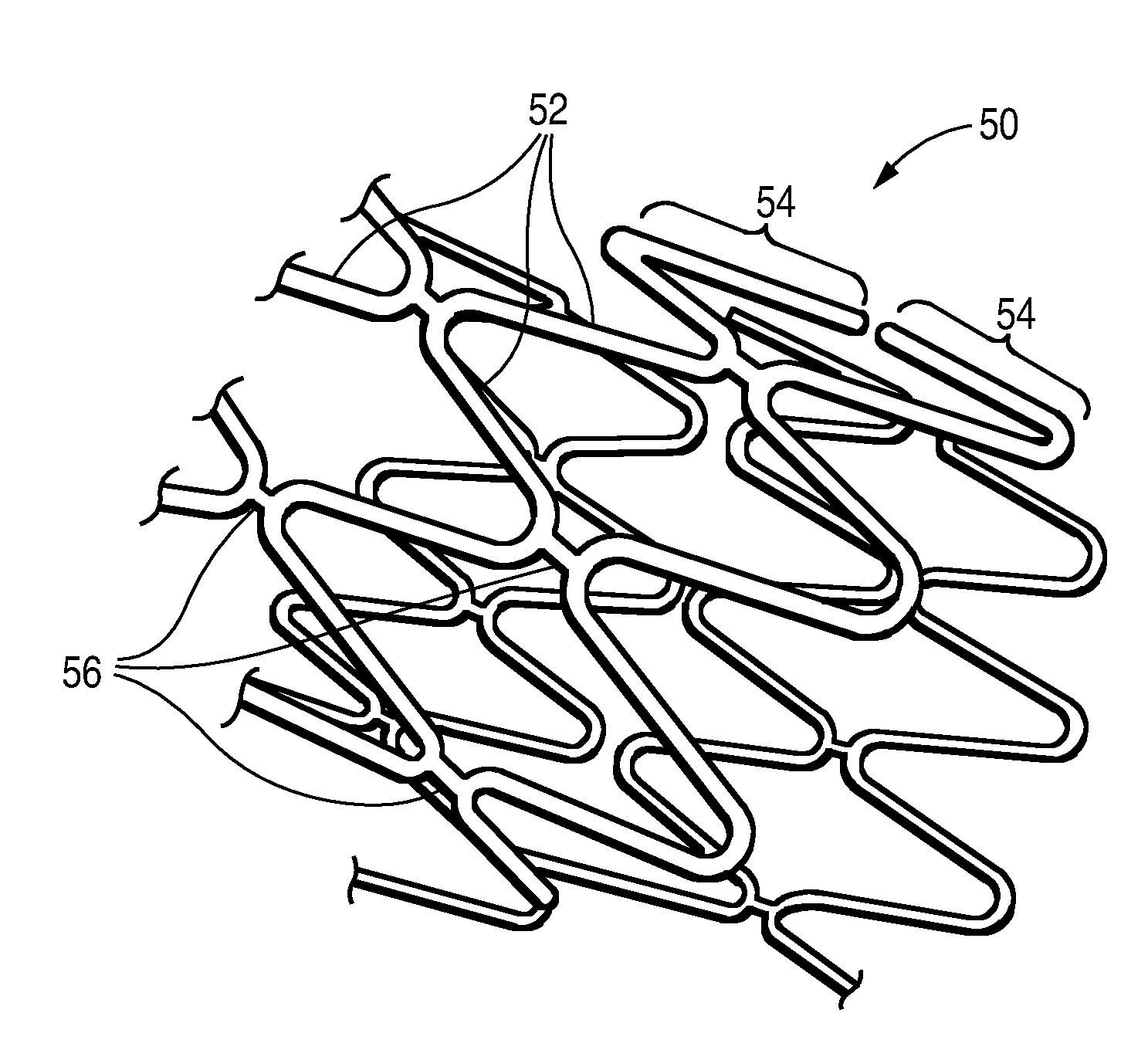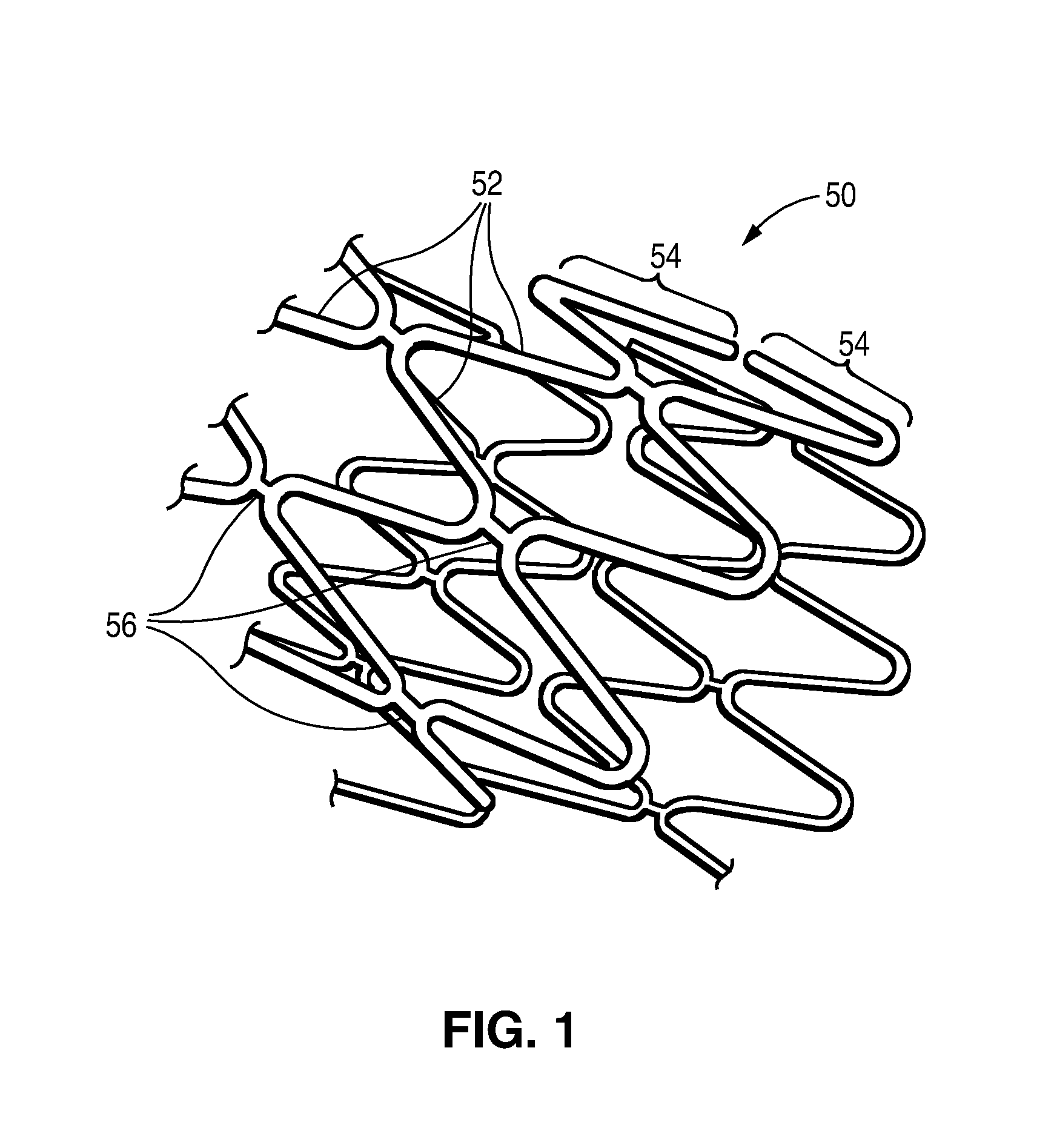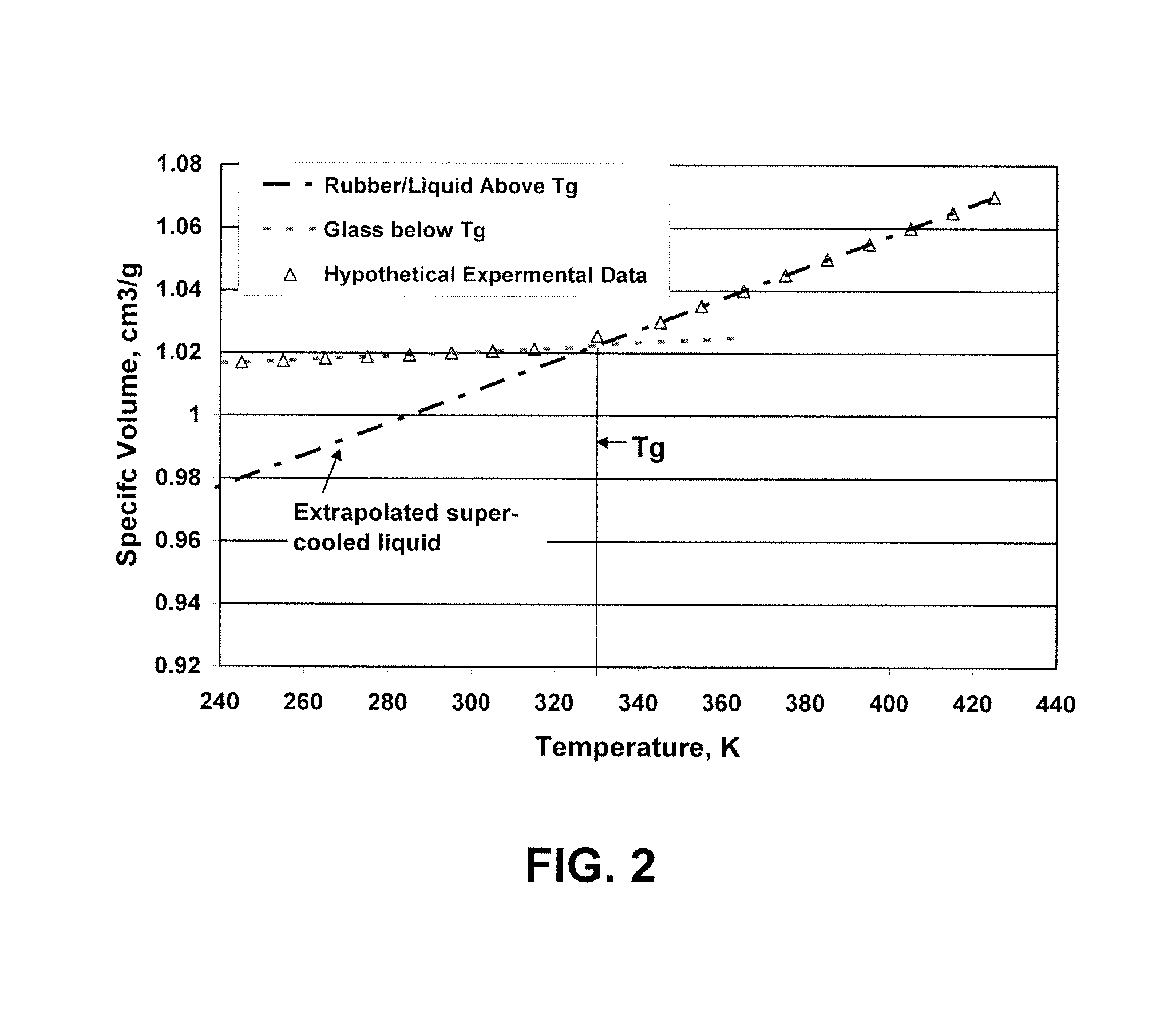Post electron beam conditioning of polymeric medical devices
a technology of polymer and electron beam, applied in the field of bioabsorbable polymer stents, can solve the problems of difficult treatment, restenosis remains a significant problem, and the properties of a polymer can change during processing and after processing, and achieve the effect of reducing the radial strength
- Summary
- Abstract
- Description
- Claims
- Application Information
AI Technical Summary
Benefits of technology
Problems solved by technology
Method used
Image
Examples
example 1
Free Radical Concentrations after E-Beam Irradiation
[0136]The following example illustrates the effect on free radical concentration of exposing stent made from a polymer to a temperature above ambient temperature after sterilization with radiation. The stents used in the study are a scaffolding made from PLLA.
[0137]FIG. 3 and Table 2 depict the relative free radical concentration of the stent with heat treatment and the stent with no heat treatment as a function of time after e-beam sterilization. The relative free radical concentration is the free radical concentration normalized to the initial concentration immediately after e-beam sterilization. The stents in the study were sterilized by e-beam radiation with a dose of 31 kGy. The stents were packaged in a foil pouch (MARVELSEAL™ 360—Nylon / Aluminum / Low Density PolyEthylene (LDPE)) made by Oliver-Tolas of Grand Rapids, Mich. The packages were sealed with an argon atmosphere inside.
TABLE 2Relative Free Radical Concentration of ste...
example 2
Number-Average Molecular Weight after E-Beam Irradiation
[0141]Polymeric stents manufactured from poly(L-lactide) (PLLA). Polymer tubes were extruded from Poly(L-lactide) (PLLA), RESOMER® L 210 S, supplied by Boehringer Ingelheim by extrusion of a polymer tube, biaxially expanding the polymer tube such that the radial expansion was within about 400% to about 500% and the axial expansion was within about 20% to about 120%, and laser cutting a stent pattern into the tube to form the stent. Subsequently, radiopaque markers were placed in the stent, and then a drug delivery coating including a polymer and a drug (PDLLA and everolimus) was applied. The stent was crimped onto a balloon catheter at a temperature of about 40° C. to about 55° C. The stents were packaged in a foil pouch (MARVELSEAL™ 360—Nylon / Aluminum / LDPE) made by Oliver-Tolas of Grand Rapids, Mich. The packages were sealed with an argon atmosphere inside. The stents in the study were sterilized by e-beam radiation with a dos...
example 3
Radial Strength after E-Beam Irradiation
[0143]Polymeric stents were manufactured from poly(L-lactide) (PLLA), coated, crimped, and sterilized as described in Example 2. The radial strength was determined by as the pressure at which irrecoverable deformation was observed. The testing utilized a MSI RX550™ Radial Force Tester equipment at a rate of 0.5 mm / second, and testing was conducted at 37° C. The radial strength of the polymeric stents were measured as a function of time after sterilization. The stents were maintained at room temperature (25° C.±3° C.) from the time of sterilization to measurement. As shown in FIG. 6, the radial strength decreases as a function of time after sterilization, reaching a “pseudo-steady state,”“pseudo-equilibrium,” or plateau value at about 60 days.
PUM
 Login to View More
Login to View More Abstract
Description
Claims
Application Information
 Login to View More
Login to View More - Generate Ideas
- Intellectual Property
- Life Sciences
- Materials
- Tech Scout
- Unparalleled Data Quality
- Higher Quality Content
- 60% Fewer Hallucinations
Browse by: Latest US Patents, China's latest patents, Technical Efficacy Thesaurus, Application Domain, Technology Topic, Popular Technical Reports.
© 2025 PatSnap. All rights reserved.Legal|Privacy policy|Modern Slavery Act Transparency Statement|Sitemap|About US| Contact US: help@patsnap.com



